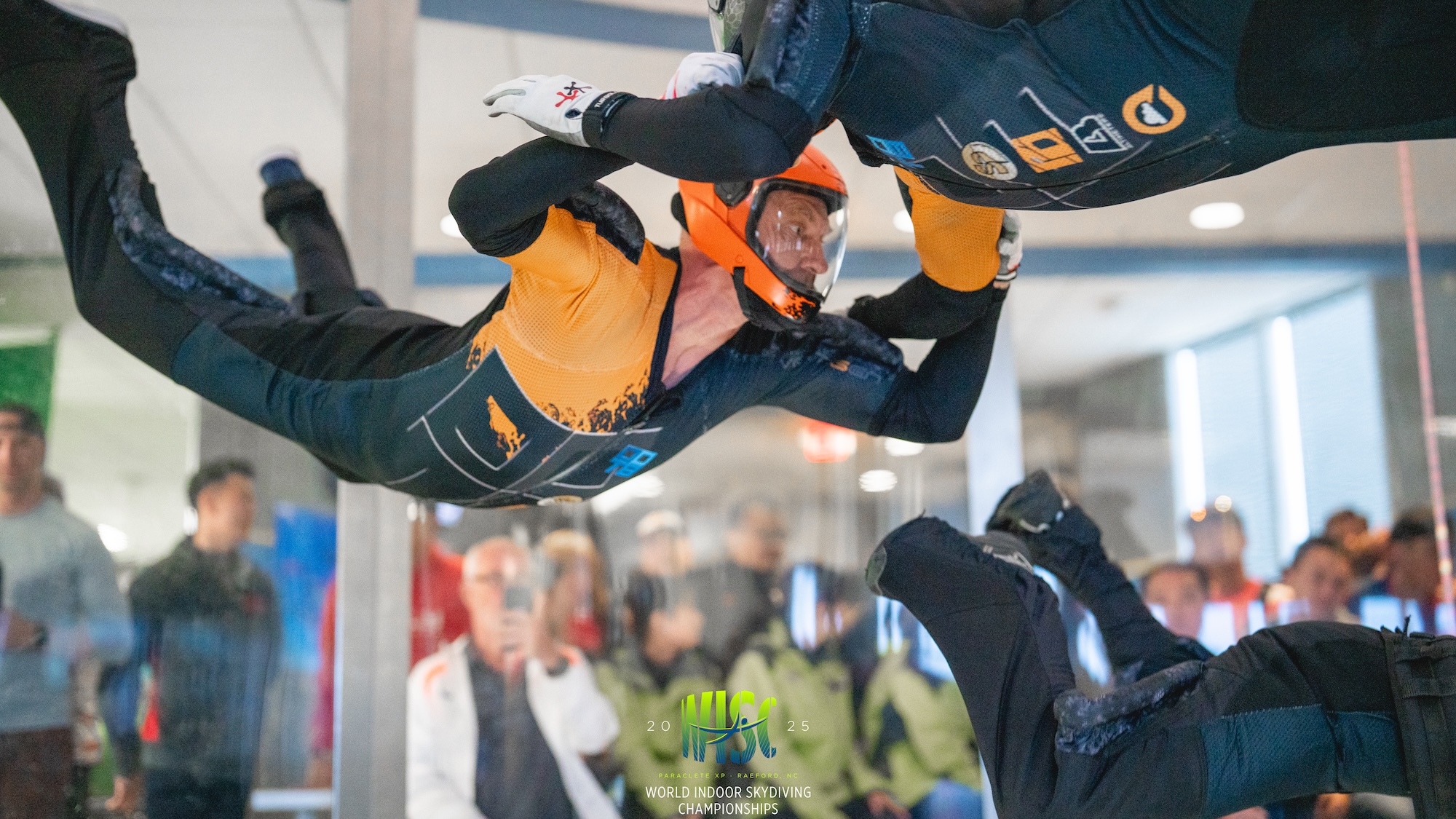Believe it or not, indoor skydiving has its own international competition. Hosted by the Fédération Aéronautique Internationale (FAI), the 5th Annual World Indoor Skydiving Championships for Artistic Events recently concluded in Charleroi, Belgium, where competitors from around the globe competed across group and individual events. Watching the aerial acrobats perform in the giant vertical wind tunnels resembles a mix between gymnastics and choreographed dance routines—but, you know, suspended in midair. Luckily, FAI made sure to record some of the performances so that everyone who couldn’t make it to Belgium can still watch the stunning feats of coordination and physics.
According to FAI, the first indoor vertical wind tunnel was developed by NASA engineers during the Apollo program in 1964 at Ohio’s Wright-Patterson Air Force Base. Indoor skydiving facilities have gained in popularity over the last 20 years, with the official count now standing at over 200 wind tunnels worldwide. While often used by experienced and professional parachutists, the wind tunnels provide an opportunity to feel what it’s like to jump out of an airplane—minus the plunging towards the Earth part. Tunnels vary in diameter, but are generally made of transparent plastic or plexiglass, which naturally can attract an audience. It only makes sense, then, that fans saw a new avenue for competition.

The World Indoor Skydiving Championships consists of two variants: Indoor Formation Skydiving and Artistic Events. The former category involves four-person teams tasked with performing their choreographed set of aerial maneuvers as many times as possible in 35 seconds. Meanwhile, Artistic Events include Solo Freestyle and Dynamic rounds. Solo Freestyle, as the name implies, lets an athlete perform “compulsory and free routines” often set to music. Dynamic matches involve two- and four-person teams completing both free and synchronized speed routines. Per the FAI:
Formation and Vertical Formation Skydiving team members must execute a formation properly before moving onto the next formation. If a team fails to execute it properly, it’s known as a bust. Judges watch the teams and count the number of successful formations. It’s quick work—hold, hold, hold, hold, in rapid succession. Each successful hold is worth one point. A bust is worth zero points. The best teams will score around 30 points per 45-second session, depending on the difficulty of each formation.
This year’s first place winners included Poland’s Maja Kuczyńska for the Solo Freestyle category, while the Singapore team won the four-person Dynamic category. A full list of champions is available on FAI’s website.


